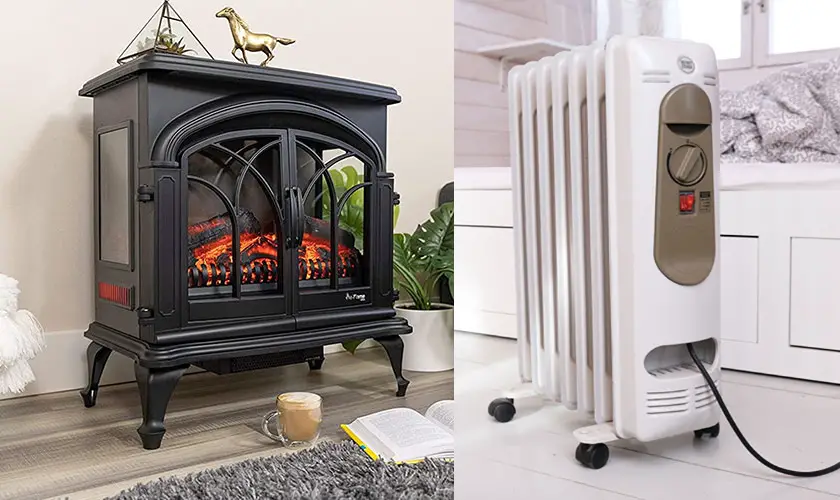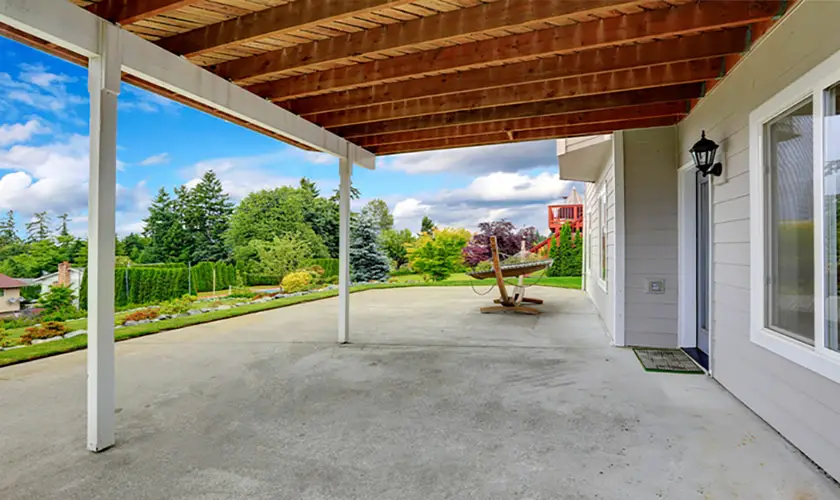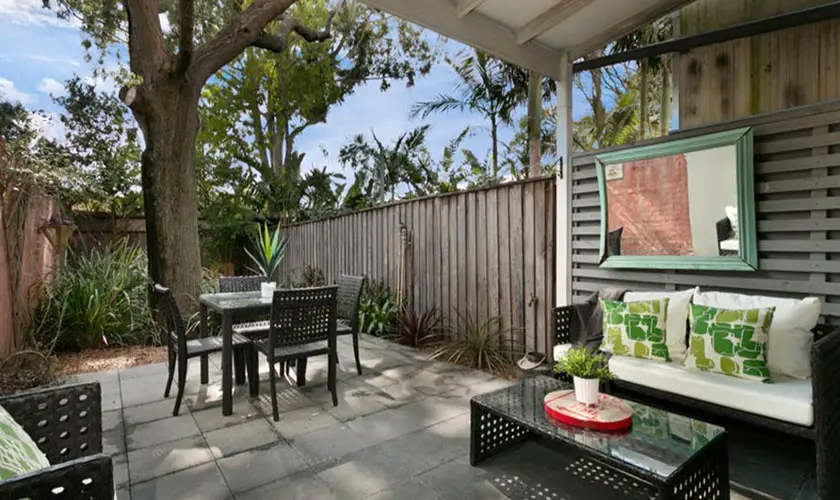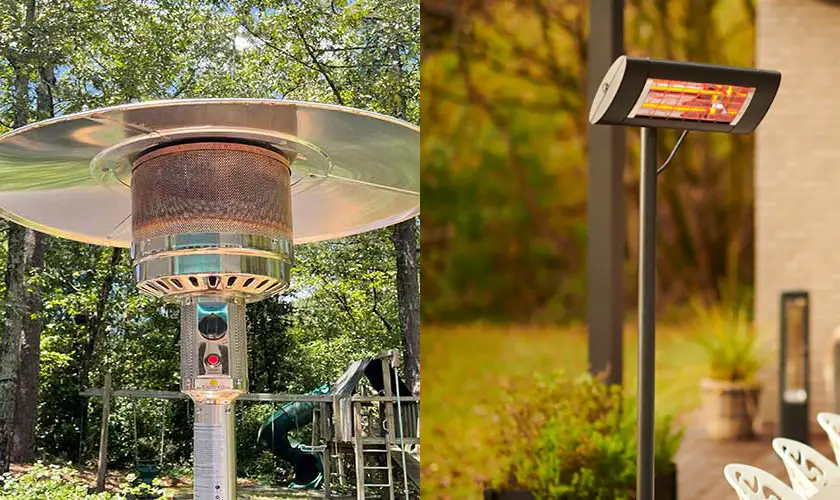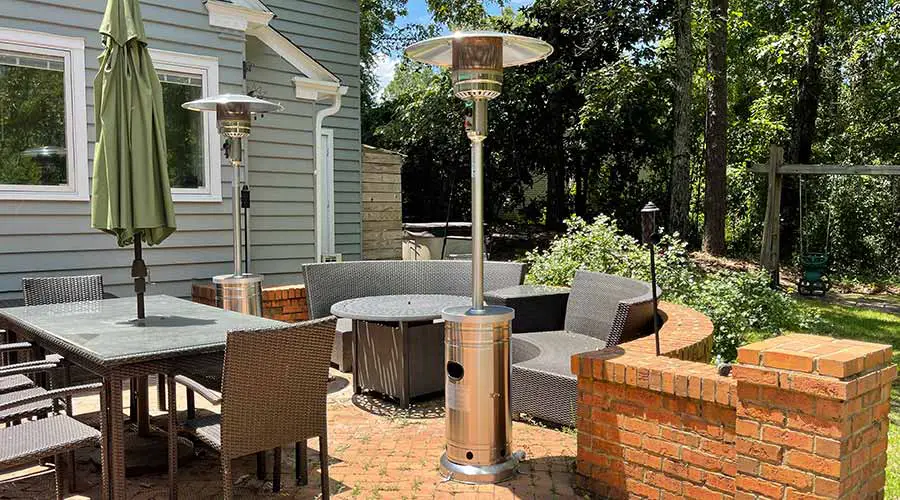
Patio heaters have become popular in the last few decades. They provide so much warmth that you can easily stay outside, even during the winter. Many coffee shops have also installed these heaters, as they’ve noticed their popularity and realized their usefulness.
For patio heaters, propane is one of the top choices when choosing fuel. It’s pretty simple to install a tank for propane, and all you have to do is change the tank every once in a while when it is empty. So, how long does a propane tank on a patio heater last?
A 20-pound propane tank will provide about 10 hours of heat for patio heaters. On average, patio heaters will cost about $1.50 to $3.00 an hour to operate. The usage reflects the patio heater settings.
It’s important to note that these tanks come in different sizes, and due to differences in capacity – they won’t get all last for an equal amount of time. Filling up a typical tank 20-lb capacity tank usually doesn’t cost more than $30.
Different heaters will utilize propane differently, meaning that not all heaters will last for ten hours without needing a refill. Several safety concerns need addressing. We’ll be addressing these concerns in today’s article.
We will ask and answer the following questions:
- How much propane do patio heaters use?
- How long does a propane tank last on a patio heater (we’ll consider different heaters)?
- How close can a patio heater be to the ceiling?
- Can you use a propane heater under a covered patio?
- Can you put a patio heater under a gazebo?
- How much clearance do you need above a patio heater?
Let’s get started!
How Much Propane Do Patio Heaters Use?
Propane heaters employ 20-pound propane tanks. This size is standardized, so you’ll rarely come across other tanks. These heaters usually use the propane at a rate of $1.5-2 an hour, and your propane tank will last about ten hours.
Some sources claim that it could last anything from nine to fifteen hours, depending on your heat preferences. If you set your heater settings to low, you’ll be using your fuel more slowly, and it will last a lot longer.
If you think about it, you’ll be spending just $2.00 per hour to keep warm whenever you’re spending time on your patio, making propane-powered heaters one of the most cost-effective methods for heating your patio.
Now, we’ll compare propane tank efficiency with different heaters. It’s important to understand that other heaters use propane differently.
These heaters measure in BTUs – British Thermal Units. BTUs are a form of measurement that measures energy. One BTU is the energy required to increase a pound of water temperature by 1°F. This ratio is used when talking about heating and air conditioning.
Heaters with more BTUs have greater heat output.
How Long Does A 20lb Propane Tank Last?
We have made a quick chart below to help you better understand how much a 20-pound propane tank lasts for the amount of BTUs used.
| BTUs YOUR HEATER HAS | HOUR LENGTH MAX |
|---|---|
| 30,000 | 15 hours |
| 40,000 | 10 hours |
| 50,000 | 8 hours & 40 minutes |
1. 30,000 BTU Heater
A 30,000 BTU heater will use 1.4 pounds of propane per hour, on average, meaning you can use this for 15 hours without stopping before you run out of propane.
2. 40,000 BTU Heater
Your average patio heater is a 40,000 BTU heater, so this is probably the most accurate description. These heaters usually last for 10 hours before you need to change your tank. These heaters are more powerful than 30,000 BTU heaters, so they use more fuel, shortening how long they last.
3. 50,000 BTU Heater
These patio heaters are powerful and distribute heat through an extensive area. A 20 lb propane tank will last roughly 8 hours and 40 minutes before depleting. They can last longer, though, if you lower your power settings.
How Much BTU Can A 20lb Propane Tank Store?
On average, a 20-pound propane tank can store up to 430,270 BTU. For this reason, people often wonder whether propane expires.
Well, we’re glad to confirm that it does not, as long as it’s properly stored. Propane fuel has no expiration date, and it won’t lose any potency if you keep it; make sure to maintain the tank’s integrity.
Some Safety Reminders
It would be best to remember a few things about storing a patio heater properly. Propane expands and contracts with the temperature rising and falling.
The fuel will stay roughly the same volume when it’s above 60 degrees (Fahrenheit), but it will contract below that temperature.
1. Work In An Open Space
When handling your propane tank, you should always work in an open, airy area (preferably in your backyard). If your tank starts to leak (which it likely won’t since tanks don’t leak, but you may damage it by accident), even the most minor leaks are dangerous for your health!
2. Don’t Touch The Liquid
Please don’t touch the liquid, as it will cause symptoms similar to frostbite. Breathing it in can also be dangerous, identical to breathing in carbon monoxide.
3. Don’t Play Around If Accidents Occur
Propane is also highly flammable, so the leak is an explosion hazard. In the case of a leak, the best thing to do is to leave the tank where it is and leave the area, and after that – call emergency services.
4. Don’t Overfull The Tank
Don’t ever overfill your tanks! Although it may seem sensible as your tank will last longer, overflowing is a massive risk because these tanks are pressurized, meaning that you’re creating an explosion hazard by overfilling it. Please familiarize yourself with your tank’s capacity and always refill it at a respectable supplier’s shop.
How Long Does A Propane Tank Last On A Patio Heater?
A propane tank can last anything from a single day to years, depending on how you use it.
Using a 40000 BTU heater will burn out your propane in 10 hours (if you’re using medium settings). That means spending an hour on your patio each day (while the heater is on), it will take you about ten days to burn out your tank of propane.
For those looking to maintain a weekly refueling, using the heater for an hour and 25 minutes a day will cause it to empty in a week.
However, propane can be stored forever and won’t expire, meaning that, in theory, you could heat your patio for an hour or two, keep it, and not heat it again for years. So your propane tank can last as long as you need it to.
Make sure to get your tank inspected by a professional annually to ensure no leaks occur. It is also wise to get your propane tank re-certified every decade.
How Close Can A Patio Heater Be To The Ceiling?
A patio heater should never be closer to the ceiling than several feet. You’re rarely exposed to an open flame at any point, but that doesn’t mean there isn’t any heat.
Your patio roof should always be at least ten feet from the ground height. You could try to slightly turn the heater to the side – to the patio’s open side to improve the way heat disperses, and it will be warmer.
These heaters are also safe to use near wood, lattice, umbrellas, and other combustible materials, but you need to maintain a distance of six feet in between.
A great thing about these heaters is that they’re portable, so you’ll have no issue moving them to accommodate these conditions. The portability of propane heaters makes them more favorable than natural gas heaters.
Carbon Monoxide Production
It would be best if you never used propane heaters indoors. These heaters are not for indoor use, and you could cause severe damage to your living area and poison anyone in the room.
These heaters give off carbon monoxide, a highly toxic gas for humans, animals, and plants. However, it isn’t an issue if you’re using your heater on your patio. There’s plenty of fresh air and natural ventilation around, making it easy for the fumes to leave the area.
These fumes give off in small concentrations, so they definitely won’t be harmful, and you can’t smell them either, so sitting there won’t be unpleasant.
Keep Your Heater Outdoors
However, if you’re using an outdoor heater inside, the carbon monoxide has nowhere to go, and it will start to collect in your room, which will begin suffocating you.
Indoor heaters have pre-installed ventilation and automatic heat regulators for this specific reason, so they’re not the same device and shouldn’t be treated as such.
Can You Use A Propane Heater Under A Covered Patio?
Yes, you can use a propane heater under a covered patio, but there are specific rules you need to follow to keep yourself and other people safe.
1. Angle Your Heater Just Right
Firstly, angle it on the open side. These heaters can still function when kept under a patio. You must understand that they can only offer enough lighting and warmth when you direct them to the patio’s open side by angling them.
This method is advantageous in distributing heat to specific areas; the covered areas tend to get limited or no heat from the patio.
If you angle your heater, the areas where it’s turned will get enough heat since there won’t be any obstacles blocking the way.
2. Use A Smaller Heater
Secondly, you can use smaller patio heaters under another patio cover. These smaller heaters will help you control the heat dispersed toward people.
The heater’s undercover method is suitable for heating lower body parts, as the heater will prevent it from reaching your upper body. The whole area will get slightly warmer, but the heater will concentrate most of the warmth on your lower body.
3. Table Patio Heaters
Thirdly, consider using table patio heaters. Not all heaters are suitable for patios, primarily since some produce a lot of smoke. They also make a lot of heat, and too much heat could melt your patio cover.
As you can see, it’s okay to use your heater under a covered patio, but not all heaters work this way. Some heaters could be too powerful, and you could accidentally burn your deck. Make sure to consult a technician before installing a heater for this purpose.
Can You Put A Patio Heater Under A Gazebo?
Yes, you can put your patio heater under a gazebo. But try to keep it away from the walls and the ceiling.
You probably think you want to enjoy your gazebo even during the colder months of the year, and putting a patio heater could do the trick. You’re right.
The Flames Are Controlled
These heaters are safer than fire pits or open fireplaces – mainly because the flame is controlled and you don’t have to stoke it.
If you’re using a heater with an open flame, you shouldn’t use it in a gazebo – these uncontrolled flames can damage your gazebo, and if the space is too tight, they could also harm you.
You will notice that many bars, cafes, restaurants, and hotels use these heaters in an outdoor dining or bar environment.
Since most of those heaters are electric or infrared, this is entirely safe. Some places use propane heaters, and those usually set them on the lowest setting to get the most use from the propane.
The Wind Is Not Your Best Friend
It’s also essential to keep the wind in mind when purchasing a propane heater you want to use in your gazebo. Heaters with unprotected flames are not suitable for this, and you should avoid them.
Make Sure To Provide Ventilation
Similar to indoor spaces, gazebos are restricted, so if you have walls you can take on and off, don’t put them on if you’re using a propane heater.
Carbon monoxide will start to collect since it won’t have anywhere to go, and you’re also putting yourself at risk of lighting something on fire.
Consider The Heater Size
Also, remember that gazebos aren’t that big, so you shouldn’t purchase a large heater – half-sized or even small heaters should be enough to heat your gazebo.
For this reason, propane heaters may not be the best option – electric heaters have some wires, while propane heaters take up a lot of space. An excellent alternative to this is installing electric wall heaters.
You also can buy gazebo heaters, which are usually umbrella-like heaters specifically designed to heat your gazebo.
How Much Clearance Do You Need Above A Patio Heater?
Patio heaters require clearance in all directions. We recommend at least three feet above the unit and at least two feet on each side.
When people don’t have enough space, they often think that they can solve this by merely shortening the center post on the patio heater. Don’t ever do this.
Heaters should be used at their original height, without any modifications. Don’t ever attempt to modify your heater.
It would be best if you never used an outdoor patio heater on the inside. Heaters need space to breathe, and don’t get that on the inside.
You should also never use your heater in temperatures lower than 40°F. Propane changes its composition when faced with these temperatures. The heater will still function properly, but it won’t be efficient anymore.
You should also never leave your heater exposed to the elements (rain, snow, etc.) – they may be designed for outdoor use, but that doesn’t mean they’re invincible and can’t be damaged. If you expose your heater to natural elements, parts and finish will deteriorate over time.
Most heaters have the manufacturer’s instructions, explicitly telling you how much space you need above the heater to function correctly.
It would be best to always refer to the user manual when in doubt (as some heaters need more than three feet of space above).
You may also find issues with your heater tipping over. Some heaters have a system installed to prevent this from happening; others don’t.
If your heater isn’t secured, you can tie it to a pillar with a bungee strap, rope, or a ratchet strap, which should be enough to keep it vertical for a short time.

Final Thoughts
Propane tanks last relatively a long time, considering. You can assure that it will never expire, but one can never be too careful as they should be recertified every decade and checked out for any leakages annually.
Overall, propane heaters are excellent for being outdoors and remaining warm and cozy. You will not be disappointed!


